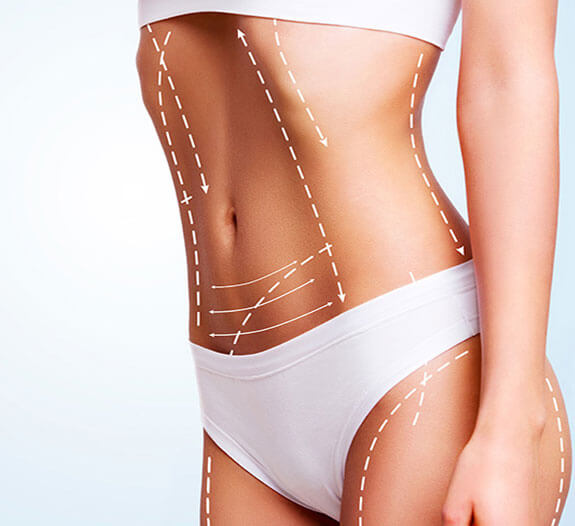
Procedure
There are different techniques for liposuction. The basic principle is the use of a hollow instrument, called a cannula, connected to vacuum suction which sucks disrupted fat from the body. It is usually done under general anesthesia unless the target site is small.
Some commonly used techniques are:
- Tumescent liposuction is the most common technique. A sterile tumescent solution (saline, lignocaine, and epinephrine) is injected into the area where the fat is to be removed. The solution makes it easier to suck the fat with minimal blood loss and pain.
- Ultrasound-assisted liposuction uses sound waves of energy to disrupt fat cells. This liquefies the fat, so, it can be sucked out.
- Laser-assisted liposuction uses the laser to liquefy the fat, as the name suggests. This is also known as SmartLipo.
Post Procedure
It is common to experience bruising, swelling, and soreness for a few weeks after the procedure. Hospital stay depends upon the technique used and the amount of fat extracted. It is suggested to wear a compression garment for 1 to 2 months after surgery as it helps to control swelling. Most people can resume work within a few days and get back to normal activities within 2 to 3 weeks.
There may be post-surgical complications in some patients like infection, numbness, bruising, inflammation and scarring and if too much fat is removed, there may be lumpiness or dents in the skin.
Results
The results of liposuction are noticeable only after inflammation goes down. In some patients, this may take a few months. Most of the swelling settles in about 3 to 4 weeks. The area where fat was removed is expected to be less bulky.
People who will maintain their weight post-procedure can usually expect permanent results. If there is weight gain after liposuction the fat distribution may change. For example, fat might accumulate around the abdomen regardless of the areas originally treated.
To maintain the body contour, an appropriate diet, and regular exercise should be followed.
 Whatsapp
Whatsapp Facebook
Facebook Twitter
Twitter Instagram
Instagram Linkedin
Linkedin Pinterest
Pinterest